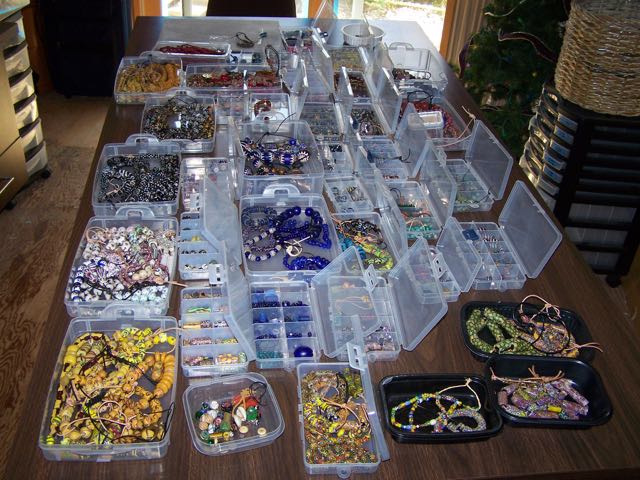| I guess I'm one of the 5%, and a "late onset" bead hoarder | |||||
| Re: Is hoarding beads an illness? -- Frederick II | Post Reply | Edit | Forum | Where am I? | |
05/13/2015, 21:50:16
The last sentence relates to bead collecting in a big way.
"Course and Causes of Hoarding"
Hoarding usually begins early in life, though onset can vary greatly. It can occur in children, and we have seen it as young as 3-years old. For young children, hoarding may look different because parents control what children can buy and the level of clutter in their rooms. More apparent in children are extremely intense attachments to objects and the tendency to personify things, applying human-like characteristics to objects. In addition, children who hoard seem to have more difficulty recognizing hoarding behavior as a problem.
The typical age of onset for hoarding behavior (though not hoarding disorder) is around age 13. At that time the behavior is usually mild and would not be considered a disorder. Hoarding typically progresses to become a moderate problem in the 20Ős and 30Ős, and a severe problem in the 40Ős and 50Ős. Onset appears to be earlier in women than in men, though hoarding occurs more frequently in men than in women. Late onset of hoarding (after age 40) is rare and seems to occur in people who have mild hoarding to begin with and suffer a loss of some kind. Most people who hoard describe a chronic course, while a small number describe an increasing or fluctuating one. Stressful and traumatic events are common in people who hoard and may be associated with periods of worsening symptoms. Recent epidemiological studies suggest that as many as 1 in 20 people have significant hoarding problems.
Hoarding is a complex disorder that is believed to be associated with 4 underlying characteristics. First there are certain core vulnerabilities including emotional dysregulation in the form of depression or anxiety along with family histories of hoarding and generally high levels of perfectionism. Second, people who hoard appear to have difficulties processing information. In particular, these difficulties appear as problems in attention (including ADHD-like symptoms), memory, categorization, and decision-making. The areas of the brain that control these functions roughly correspond to the brain regions that have been shown to activate differently in people who hoard. Third, people who hoard form intense emotional attachments to a wider variety of objects than do people who donŐt hoard. These attachments take the form of attaching human-like qualities to inanimate objects, feeling grief at the prospect of getting rid of objects, and deriving a sense of safety from being surrounded by possessions. Fourth, people who hoard often hold beliefs about the necessity of not wasting objects or losing opportunities that are represented by objects. Additional beliefs about the necessity of saving things to facilitate memory and appreciation of the aesthetic beauty of objects contribute to the problem.

|